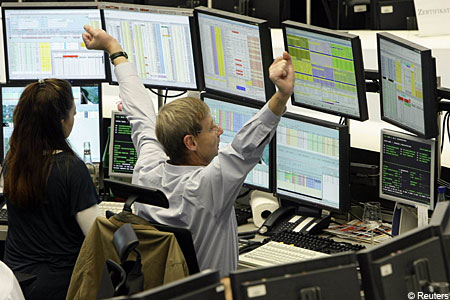Revenue generated by investment banks from underwriting Chinese IPOs globally was US$650 million in the first three months of this year, The Wall Street Journal reported. With all due respect to the Journal, that is probably a low-ball estimate, not counting all the ways banks profit from new listings.
As a former IPO banker I can assure you that the fee streams are many – bankers are nothing if not creative in the ways they charge for their deals. And if you are an active IPO investor, some of that cash is coming out of your pocket.
But how do banks make their money? Firstly, they charge fees to issuers (and selling shareholders). These “gross fees” represent a percentage of the total offer size, and can vary from anywhere between 1.5% and 3.5%. They can even reach 6% or 7% for companies that get listed on one of the US exchanges, or for some listings on the Mainland.

One of banks’ enduring accomplishments has been to persuade issuers to accept a fee based on percentage of the total dollar size of their IPOs (instead of, for example asking for a flat fee, or billing for total man-hours worked, as often would a law firm).
Yet, it’s not as straightforward as that. Because large deals are highly competitive and because issuers have twigged onto the fact banks get paid highly on IPOs, the large listings tend to pay a lower gross fee. For example, Citic Securities’ recent HK$13.2 billion IPO paid a gross fee of 1.5% (and a 1% incentive fee), for a fee pool of up to about US$42 million. Meanwhile Tenfu’s smaller HK$1.25 billion offering paid a gross commission of 2.5% (again with an incentive of 1% on top, and for the top banks only).
And because the large deals attract more competition, typically, more banks will be involved in the offer, each with a cut of the fees. This is what is known in the industry as a syndicate. The alpha dogs in that group are the bookrunners – the banks that effectively decide which institutional investors get to participate in an IPO.
There’s a strict hierarchy in a syndicate of underwriters. The banks acting as bookrunners will often share among themselves perhaps 75% to 85% of the fee pool. The balance is made available for more junior syndicate members, known as co-lead managers or co-managers. Because bookrunners decide which funds get to buy into an IPO, they pretty much monopolise management time during the roadshow with investors in ‘one-on-one’ meetings. Hence, they receive almost all the booked orders.
The junior underwriters are not really expected to contribute to investor demand, and are basically paid a fixed fee – generally in the order of several hundred thousand US dollars – for writing pre-deal research, and for chasing feedback from institutional accounts during the investor education (or pre-marketing) stage. They are essentially there to help generate interest through their relationships and research.
These days, and irrespective of the firms’ performance in selling the offer, the split of the gross fees is generally pre-agreed at the outset, either among the banks themselves or, more often, at the direction of the issuer and its shareholders. Such a split is rarely disclosed outside of the US, but how the names of the underwriters appear on the cover of prospectuses, or in newspaper advertisements, usually gives a good indication as to who’s on top and who isn’t, with the top left position – when not in alphabetical order – being the most coveted.
Additional fees occasionally can be charged separately to issuers by banks acting as a sponsor on an IPO. They reflect the work done on the prospectus, and for helping to negotiate its contents with the exchange.
Investment banks also make money from investors on IPOs, by charging them a brokerage commission – often 1% – on the shares they buy.
And because of the high trading volumes that follow the listing of a new company, banks make significant fees in the secondary market in the few weeks after an IPO. This is especially true of the bookrunners who, unlike other firms, know where stock has been allocated and which investors own shares, may want to sell all or part of their holdings – or to top up their allocations.
Bookrunners routinely allocate a “greenshoe” on an IPO. This involves the sale of up to an extra 15% of the original number of shares. If the stock trades below the IPO price in the first month, one of the bookrunners will be standing by to buy back those securities. This helps prop up the shares at or above the IPO price. It is also profitable because the banks borrow for free from a shareholder the extra shares allocated, and may buy these back for less than they sold them – keeping the difference.
Philippe Espinasse worked as an investment banker in the US, Europe and Asia for more than 19 years and now writes and works as an independent consultant in Hong Kong. He is the author of IPO: A Global Guide, published by HKU Press.
[This article was originally published in The South China Morning Post on 17 October 2011 and is reproduced with permission.]
(c) 2011 South China Morning Post Publishers Limited, Hong Kong. All rights reserved.
